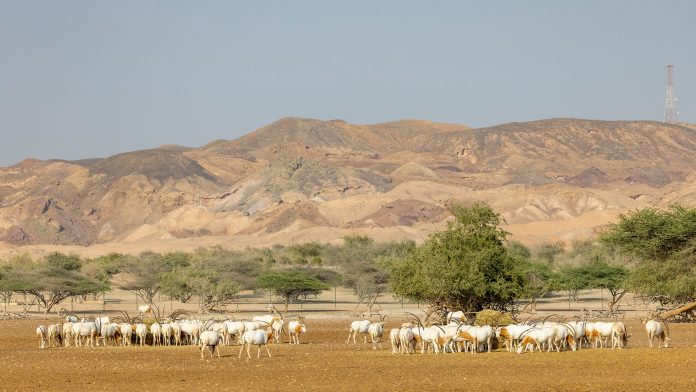An international team of researchers, led by the German Centre for Integrative Biodiversity Research (iDiv) and the Martin Luther University Halle-Wittenberg (MLU), has concluded that current monitoring data is unable to provide a precise global picture of local biodiversity richness trends.
Current attempts to quantify global biodiversity change are supported by models that take measurement errors and spatial biases into account. With existing data rendered as inaccurate to provide a reliable picture of global biodiversity change, the team argues that local and regional assessments of biodiversity change must be prioritised instead.
The study, ‘The undetectability of global biodiversity trends using local species richness,’ is published in the journal Ecography.
The importance of biodiversity monitoring
The global loss of biodiversity is one of the most urgent challenges facing humanity. This is recognised by society and politicians worldwide, and at the recent World Biodiversity Conference COP15, the Member States of the UN Convention on Biological Diversity (CBD) implemented new goals to slow down and reverse this decline.
To ensure that this agreement is successful, it was urged that biodiversity monitoring must be improved to record and evaluate trends.
Why is the current way to measure biodiversity change problematic?
There are many different ways to measure biodiversity, the most common being species richness at the local scale. However, although it is clear that global loss of biodiversity is occurring at alarming rates, this is not always reflected at the local scale. Previous global syntheses have shown inconsistent results on the extent and direction to which local species richness is changing.
“There has been a heated debate on the scientific community on why major global syntheses so far have not found negative trends of local species richness,” stated Professor Henrique Pereira, head of the Biodiversity and Conservation Research Group at iDiv and MLU and last author of the study.
“We show that the declines in local species richness are likely to be much smaller than many anticipated and that, in those conditions, even minor spatial biases and errors in monitoring lead to the lack of detection of global trends.”

To create a global picture of what is occurring at the local scale, all available observation data must be collected and analysed across time.
“The occurrence of species is recorded locally all over the world by many different people and organisations,” said first author Dr Jose Valdez, a postdoctoral researcher at iDiv and MLU. “The problem with the data is that they were and are recorded under completely different conditions and mostly not under standardised rules. If you then pile them together, the errors and deviations add up, making the result very inaccurate.”
Underrepresentation of the Global South is distorting species monitoring results
The researchers demonstrated that the biodiversity monitoring results are impacted by a variety of factors, including time intervals between sampling, the size of the sampling sites, and small errors in counting the number of species at a site. Significantly, a major problem in recording global biodiversity trends is also the regional imbalance.
The study revealed that biodiversity data is more likely to be derived from countries with a higher GDP, inside protected areas, densely populated areas, or from regions with biodiversity hotspots. In particular, most of the data collected were from Europe and the US, with tropical regions and habitats being significantly underrepresented.
By excluding areas with the largest losses, such as sites that were located mostly in southern and central South America, central and eastern Africa, southeast Asia, and Australia, a significantly distorted impression of the global biodiversity status can occur.
Can these regional biases be compensated for?
To find out whether these biases can be overcome, the researchers simulated thousands of monitoring networks that accounted for the previously mentioned factors. The PREDICTS projections of local species richness trends acted as the basis for this, which was developed with a globally comprehensive compilation of data from over 32,000 sites worldwide and over 51,000 species.
By using this data, the team discovered that global changes in biodiversity could be determined in hundreds of perfectly sampled sites within a decade and thousands of sites within a three-year period.
Detecting the average global trend of species change may be impossible
However, perfect sampling does not exist, with studies showing that monitoring data typically contain 10% to 30% errors due to missing or misidentifying species during sampling. With even small measurement errors of just 5%, the ability to detect any global biodiversity change was drastically reduced. Accounting for more realistic errors and further imprecision factors, detecting the average global trend may simply be impossible.

“Our results demonstrate that capturing accurate trends in local species richness would require monitoring an unfeasibly large number of perfectly sampled sites,” said Valdez.
“However, the question is whether this would even be useful or meaningful for effective and responsive biodiversity conservation. Conservation strategies and measures are coordinated and implemented not on a global level, but at local and national scales. Measuring biodiversity trends at these smaller scales is not only more practical but also helps in understanding the drivers of biodiversity loss and assessing the progress of conservation policies.”
“A substantial increase of biodiversity monitoring is needed, combined with analysis that uses models to fill in data gaps”, said Pereira.
The researchers believe that a representative network of sampling sites around the world should be established. This would provide independent, integrated, and regularly updated biodiversity data. Such an approach is currently being developed for the European Union with the EuropaBON project.









